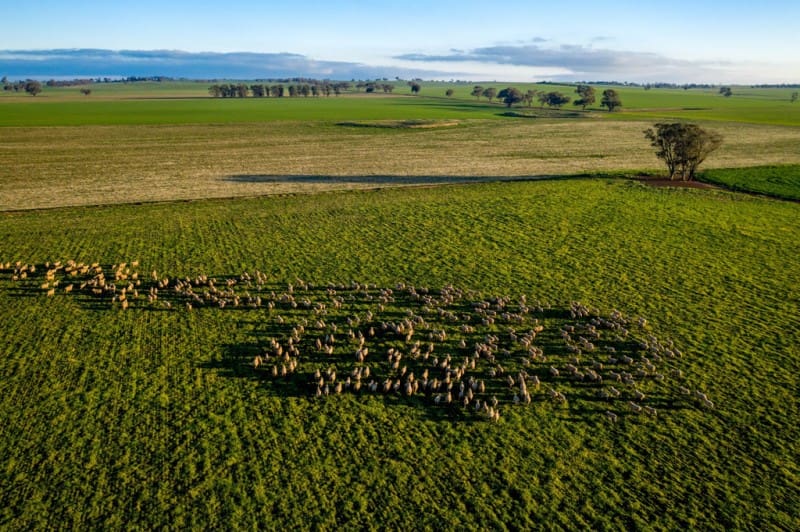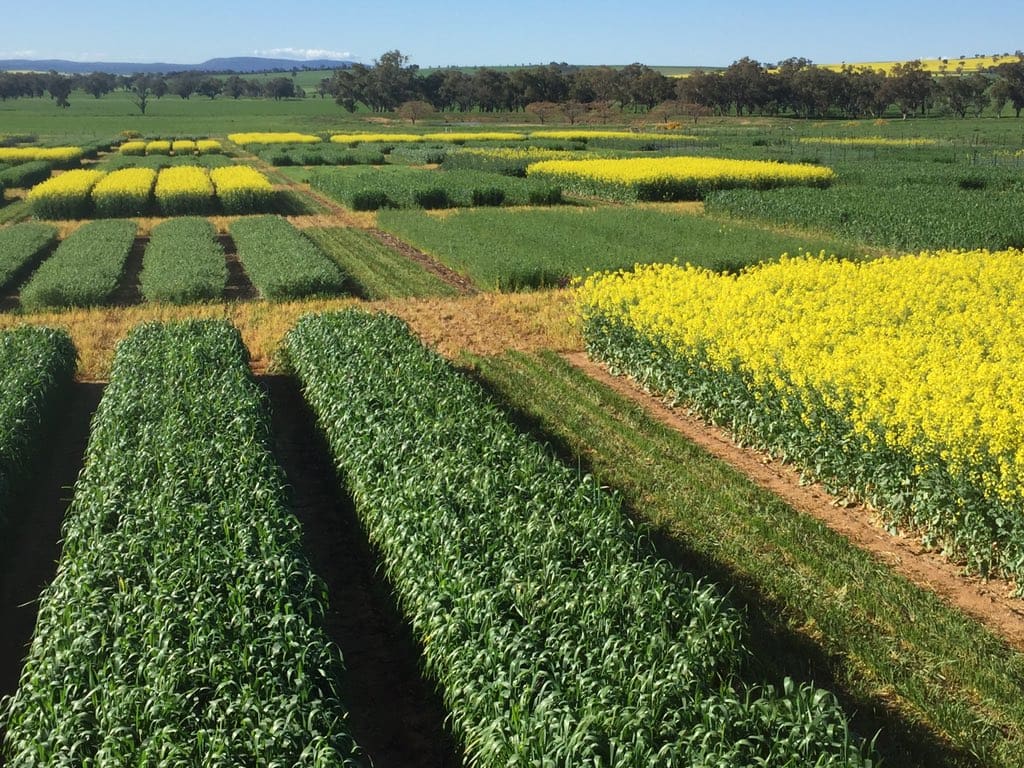
Pine Grove at Sebastopol on the south-west slopes of NSW sold privately last month at a record price for the district. Photo: Miller and James, Temora
PRICES for agricultural land on the south-west slopes of New South Wales are showing unprecedented strength as dual-purpose crops add the kind of versatility that once resided only with double-cropping opportunities in summer-rainfall areas.
Country is regularly fetching more than $10,000 per hectare, with Pine Grove at Sebastopol south of Temora selling last month for $11,856/ha ($4800/acre) among the latest examples.
“It’s a district record,” Miller and James agent for the sale Angus McLaren said.
The vendors have been growers of canola, wheat and barley, and pastures, as well as running cattle and sheep, and the property sold to a local cropping family.
Value of sheep
LAWD senior director Col Medway said dual-purpose crops, coupled with strong sheep prices, have bolstered confidence in the south-west slopes.
“The south-west slopes is the hottest market in NSW at the moment,” Mr Medway said.
“The properties were nudging $4000/acre not so long ago, and now $5000 is a common occurrence.”
Districts including Cootamundra, Grenfell, Harden, Junee, Temora and Young have all seen blocks and farms trade this year at those levels.
They did not escape the 2017-19 drought, but most growers managed to plant some crop for grazing, cash or hay, and use sheep for cash flow.
It was an option not available to most on the Liverpool Plains, on the northern slopes of NSW, or on the Darling Downs of southern Queensland, traditionally the three strongest dryland cropping property markets in Australia.
“In NSW, the most acute pain I saw in farming businesses in what were traditional wheat-sheep zones were the ones that no longer had sheep.”
The Downs, and the northern slopes of NSW as well as the Liverpool Plains, can produce dryland sorghum, sunflowers, maize, cotton and mungbeans over summer, and cereals and pulses over winter.
Limited planting opportunities since 2017 in all three districts have seen their per-hectare prices plateau, while south-west slopes values have firmed.
Downs country has traded at up to $12,500/ha ($5000/acre) in the past year or two, while on the northern slopes of NSW, $11,000/ha has been achieved in the past year.
What links all four regions is an annual average rainfall of at least 575 millimetres.
What separates the south-west slopes has been its ability to capitalise, because of on-farm infrastructure and rainfall, on record lamb prices.
Mr Medway said the aftermath of drought had tempered local family appetites for expanded area in the north.
“Their farm businesses are more focused on recovery than expansion.”
Mr Medway said there was “quite a disconnect” between the buoyant south-west slopes market and the northern slopes.
“What’s largely driving that is the adoption of grazing canola and wheat.”
“The grain-and-graze crops haven’t moved north just yet, and I wonder if that is going to happen.”
Dual-purpose appeal
Area planted to dual-purpose canola is trending up on the south-west slopes because it fills the feed gap left when pasture growth slows over winter, and is helping mixed farmers augment their grazing incomes with a grain or hay option at year’s end.
Delta Ag Young-based agronomist Dave Crowley said while dual-purpose crops have a long history on the south-west slopes, ongoing research into farming systems at sites like Iandra was enabling growers to get the most from them.
“Dual-purpose crops work well in our area where our seasons have been kinder than they have been in the north.
“They give us options.”

Farm systems research at Iandra, Greenethorpe is feeding into decisions made by mixed farmers on the NSW slopes. Photo: Tony Swan, CSIRO
Located at Greenethorpe and led by Dr John Kirkegaard, CSIRO’s Iandra project regularly hosts events where growers and consultants can see how grazing pressure, sowing times, rotations and other factors affect productivity.
Mr Crowley said results from Iandra, and independent trials done by Delta Ag and others in relation to varieties and crop management, had helped growers improve their farming systems.
“John Kirkegaard and his team have always been good at researching what will be applicable to growers, and we work in well with those guys.
“It’s growers looking to push the boundaries…helped by extension that takes research to implementation.”
He said grazing canola had been taken up more in the past five years.
“We grow a lot of canola, but the early planted dual-purpose canola is still a lot less than spring canola.”
Help from varieties
At Cootamundra, Biddulph Rural Consulting director Sandy Biddulph said the release of improved dual-purpose wheat and canola varieties had encouraged their uptake on the slopes, with canola the standout.
“Grazing canola is absolutely revolutionary. I call it the magic pudding, because you cut and come again,” Mr Biddulph said.
“In 2017, 2018 and 2019 when we had below-average rainfall and improving lamb prices, people were getting over $1000/ha from it just in grazing value.”
While spring canola is traditionally sown from mid-April, dual-purpose canola can be sown from February, and Mr Biddulph said this early sowing window helped to spread the risk mixed farmers manage.
“There could be heat or frost or low rainfall, and you can graze it, graze it out, cut it for hay, or harvest it.”
He said early sown (winter) canola required careful management, as crops could run into problems with weeds that were not controlled over a short summer fallow.
The south-west slopes remains the heartland of NSW canola production, and spring canola is still the frontrunner.
It earns its money through oilseed yield, possibly with bonification for oil content over a certain percentage, and Mr Biddulph said these crops were also achieving improved results for many growers.
“There’s been a move away from open-pollinated towards hybrid varieties, and an increase of application of urea and better use of fungicide for better yields.”
Mr Biddulph said FarmLink’s research at Temora had been significant in helping mixed farmers get the most from their country and adapt to variable seasons with a number of crops including winter and spring canola.
“You’re very conscious now of retaining soil moisture, and the need for groundcover to reduce weeds over summer, and how to manage crop establishment in stubble.”
“That’s happening right across the grainbelt.”
Mr Biddulph said low interest rates, coupled with the region’s ability to be profitable even in dry seasons, were pushing up land values.
“Low interest rates have done their bit, and we’re also getting non-agricultural investors who have looked at a land bank because they can see there’s long-term growth.”
Grain Central: Get our free cropping news straight to your inbox – Click here

HAVE YOUR SAY